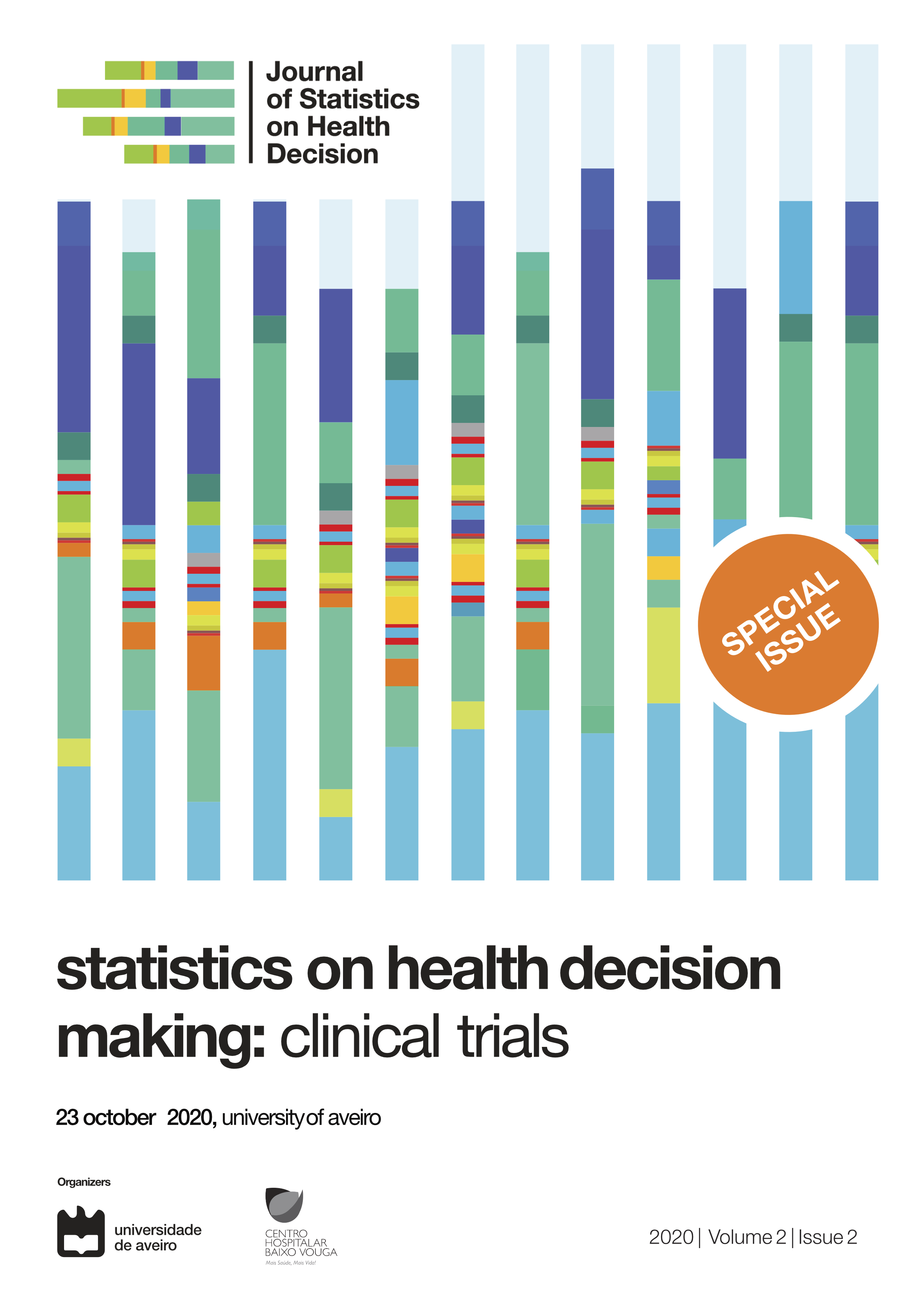Cox Models and Cure Mixture Models
An application to the time to hospitalization in Ulcerative Colitis patients
Abstract
Introduction : Ulcerative colitis (UC) is an idiopathic chronic inflammatory bowel disease characterized by periods of remission and acute exacerbations, and unpredictable disease course. Despite the availability of new drugs, there are still a considerable proportion of patients that will be refractory to therapy, need colectomy or develop complications, highlighting the need for better predictive markers of disease course.
Considering the endoscopic extent of disease at the time of diagnosis, patients were divided into three major subgroups: inflammation limited to the rectum (E1), left-sided colitis with inflammation distally to the splenic flexure (E2) and extensive colitis with involvement proximal to the splenic flexure (E3). The combination of endoscopy and histology seem to provide a better indication of disease activity than endoscopy alone, especially in endoscopically non-inflamed mucosa. No study has assessed the prognostic value of histological features at diagnosis, and therefore it remains unknown whether the pre-treatment microscopic findings can predict the course of the disease.
Herein, we designed a multicenter retrospective study to evaluate the prognostic value of histologic features in treatment-naïve proctitis and left-sided ulcerative colitis patients. Our goals were to evaluate the prevalence of microscopic inflammation in the macroscopically uninflamed mucosa, as well as the predictive value of the histological features of disease (in the endoscopically inflamed and non-inflamed mucosa) at the time of diagnosis.
In Portugal there has been a considerable consumption of medical resources associated to UC. Between 2010 and 2017, around 3400 people were hospitalized due to this disease, with an average hospital stay of 10 days with a minimum of 0 days and a maximum of 109 days, making the study of hospitalizations in this disease is a very relevant issue in order to have a perspective of its occurrence, as well as to help in the monitoring of patients and in clinical and hospital administration decision making. In this work, we analyse the time to the need of hospitalization of 93 patients diagnosed with UC in stages E1 and E2.
Methods: Cox models were used since proportional hazards assumption was not rejected and Cox models are popular amongst medical researchers, especially concerning the parameter interpretation. Moreover, according to Nardi and Scheper (2003), a good discrimination among parametric models require censoring not to exceed 40-50 per cent. Our data is of moderate size and about 85% of the cases correspond to censored times. Nevertheless, for comparison purposes, we consider fitting parametric models in future work since they can perform better than the Cox model if the conditions they require are met.
Results: Age, endoscopic extent and severity scores at diagnosis on the time to hospitalization were the considered covariates. From these, only age was significantly associated, with older individuals being expected to have later hospitalizations (HR 0.95 (CI 95%: 0.9-0.99), p-value=0.016). As said above, a large proportion of individuals had no hospitalizations despite their long disease history. The observed mean time to hospitalization was 1.34 years (0.02 - 3.31 years) whereas the average time of censured observations was 4.33 years (0.18 - 26.95 years), suggesting that there are individuals who will never experience the event of interest, even if the time under observation could be prolonged indefinitely. Therefore, we considered the possible existence of “healed to hospitalization” individuals. To explore this hypothesis, cure models were implemented considering the same set of covariates for comparison purposes. It is assumed that the individuals come from a mixture of two populations – those who will experience a hospitalization and those who will not. Besides producing an estimate of the percentage of the “cured” population, it is expected to obtain a more realistic estimate of the survival function for the fraction of the population who will suffer the event. The estimated cure rate is 30.5 percent, meaning that it is expected that about 30.5% of the censored individuals will never experience hospitalization.
In the component defining the cure and not cure, the only significant at 10% was variable was nancy score (OR=4.36; CI90%: 1.09-17.4; p-value=0.08), with higher values of Nancy score favouring susceptibility.
Regarding the survival of susceptible individuals, none of the variables under analysis were significant.
Discussion and Conclusions: Comparing the results of both models made us believe that to disregard the possibility of “cure” may lead to biased conclusions concerning the influence of the considered covariates in the time to hospitalization.
Copyright (c) 2020 Alexandra Sofia Ribeiro de Almeida, Marília Antunes, Joana Torres, Catarina Frias Gomes

This work is licensed under a Creative Commons Attribution-NonCommercial-NoDerivatives 4.0 International License.
When submitting an article to the Journal of Statistics on Health Decision (JSHD), authors certify the following clauses:
- Originality and single submission – The contents presented in the article have not been published previously in whole or in part, and were not submitted or are not under active consideration elsewhere prior JSHD decision. The article is authentic and does not contain plagiarism.
- Authorship – All authors reviewed the article, agreed with its content, and agreed to its submission to the JSHD. All the authorship criteria stated by The International Committee of Medical Journal Editors Guidelines were met.
- Conflicts of interest – Any conflict of interests were declared. If authors have no declaration, it should be written (in the acknowledgements section): “The authors declare no conflict of interests”.
- Ethics committee and informed consent (if applicable) – The current research was approved by an independent ethics committee and subjects gave their informed consent before they were enrolled in the study.
- And authors agree to the Open Access license agreement of the Journal of Statistics on Health Decision, stated bellow.








